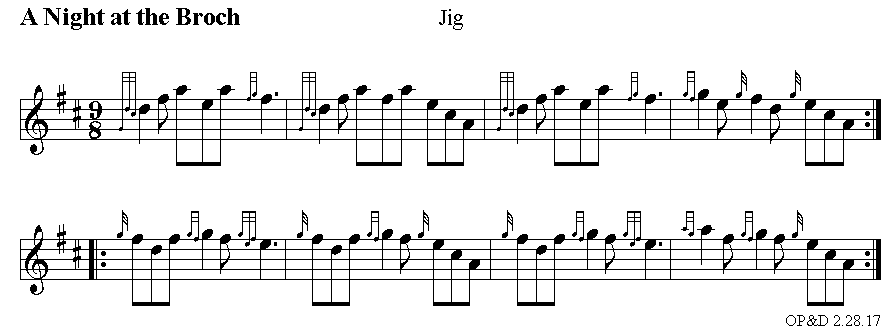A
Night at the Broch
A broch is an
Iron Age drystone hollow-walled structure of a
type found only in Scotland. The word broch
is derived from Lowland Scots 'brough', meaning
(among other things) fort. In the mid-19th
century Scottish antiquaries called brochs
'burgs', after Old Norse borg, with the
same meaning.
A precise definition for the
word has proved elusive. Brochs are the most
spectacular of a complex class of roundhouse
buildings found throughout Atlantic Scotland.
The Shetland Amenity Trust lists about 120 sites
in Shetland as candidate brochs, while the Royal
Commission on the Ancient and Historical
Monuments of Scotland (RCAHMS) identifies a
total of 571 candidate broch sites throughout
the country.
The origin of brochs is a
subject of continuing research. Sixty years ago
most archaeologists believed that brochs,
usually regarded as the 'castles' of Iron Age
chieftains, were built by immigrants who had
been pushed northward after being displaced
first by the intrusions of Belgic tribes into
what is now southeast England at the end of the
second century BC and later by the Roman
invasion of southern Britain beginning in AD 43.
Yet there is now little doubt that the
hollow-walled broch tower was purely an
invention in what is now Scotland; even the
kinds of pottery found inside them that most
resembled south British styles were local hybrid
forms.
The distribution of brochs is
centered on northern Scotland. Caithness,
Sutherland and the Northern Isles have the
densest concentrations, but there are also a
great many examples in the west of Scotland and
the Hebrides. A few examples occur in the
Borders (for example Edin's Hall Broch and Bow
Castle Broch); on the west coast of Dumfries and
Galloway; and near Stirling. In a c.1560 sketch
there appears to be a broch by the river next to
Annan Castle in Dumfries and Galloway.
The original interpretation
of brochs, favored by nineteenth century
antiquarians, was that they were defensive
structures, places of refuge for the community
and their livestock. Brochs' close groupings
and profusion in many areas may indeed suggest
that they had a primarily defensive or even
offensive function. Some of them were sited
beside precipitous cliffs and were protected by
large ramparts, artificial or natural.
Generally, brochs have a single entrance with
bar-holes, door-checks and lintels. There are
mural cells and there is a scarcement (ledge),
perhaps for timber-framed lean-to dwellings
lining the inner face of the wall. Also there is
a spiral staircase winding upwards between the
inner and outer wall and connecting the
galleries. Brochs vary from 16–50 ft. in
internal diameter, with 10 ft. thick walls. It
is normal for there to be a cell breaking off
from the passage beside the door; this is known
as the guard cell. It is generally accepted
among archaeologists that brochs were roofed,
perhaps with a conical timber framed roof
covered with a locally sourced thatch.
 |



